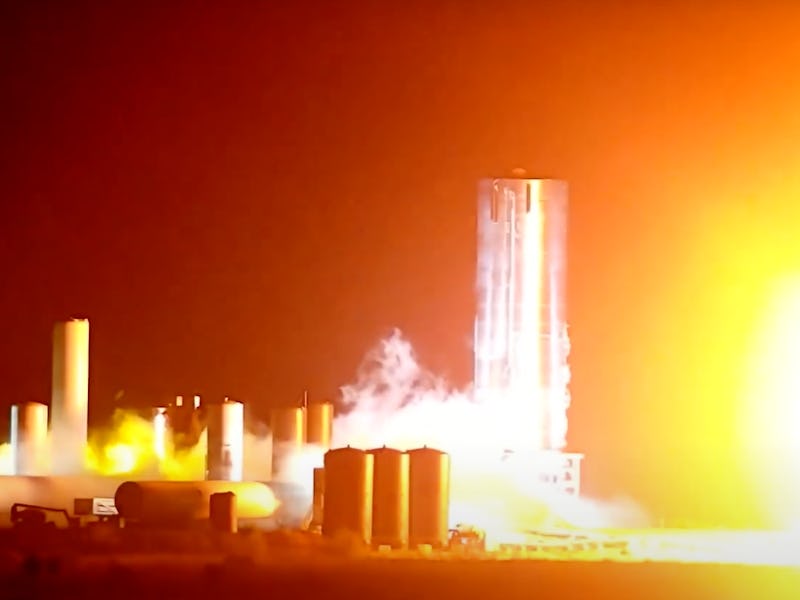SpaceX Starship: watch the impressive test ahead of full-size launch
SpaceX has put the Starship SN4 through its paces ahead of an expected launch.

SpaceX's ambitious Starship rocket, designed to send humans to Mars and beyond, has taken its next step toward completing a full-size launch.
On Wednesday morning, CEO Elon Musk announced via Twitter that "SN4," one of the prototype models, had successfully completed a static test fire designed to check the ship's single Raptor engine. It's another move closer to a "hop test" that send the craft 150 meters (around 500 feet) into the air, before moving onto a bigger jump and leading to a first commercial mission sometime next year.
YouTuber "LabPadre" shared footage of the successful static test fire, completed at 8:57 p.m. local time on Tuesday at the firm's facility in Texas:
The first Starship model was completed in September 2019, just one month after a miniaturized version dubbed "Starhopper" successfully flew 500 feet into the air in its own "hop test." While both ships use the Raptor engine, a successful flight of the full-size prototype will likely be an impressive spectacle: the stainless steel behemoth measures 160 feet high and 30 feet in diameter, designed to transport over 150 tons or 100 people into space at a time.
Paired with the Super Heavy booster, designed to help the ship leave Earth, the full construction could measure nearly 400 feet.
The next steps after the static test fire will be a full-size "hop test." On Wednesday, Musk commented on Twitter that "hopefully" the team would be able to re-use the permit given to the Starhopper for its 150-meter flight for a full-size launch to a similar height. A 20-kilometer (over 12 miles) flight into the air would likely require a new permit, meaning a longer time before launch.
The "SN4" prototype, like the Starhopper, is using a single Raptor engine, as pictured earlier this week:
The single Raptor engine.
A planned "SN5" successor would use three Raptor engines. Musk also stated last month that "either SN5 or SN6" would feature the flaps required to make the ship fly higher.
The final design is expected to feature six Raptor engines. This will pair with the Super Heavy booster, which is expected to pack a further 31 engines, to offer 16 million pounds-force of thrust. Unlike the Merlin engines that power the Falcon 9 using rocket propellant, these engines are powered by liquid oxygen and methane that makes them suitable for supporting missions to distant planets – astronauts can harvest new resources from the planet's natural supplies.
All of this is building toward SpaceX's most ambitious missions. It's already outlined plans for a private trip around the moon, and a city on Mars by 2050. But the Starship's large design could enable new capabilities like sending even larger space telescopes into space, capturing satellites in orbit, and even sending humans around the Earth city-to-city in less than one hour. The first mission, expected to be a telecommunications satellite, could launch in 2021.
The Inverse analysis – The static test fire is a key step toward a full-size launch, paving the way for an even higher launch further down the line. When Musk unveiled the first full-size prototype in September 2019, he suggested an orbital flight could take place in around six months from then, a figure that's “accurate to within a few months.” While a 500-foot launch is not quite orbital height, it's will demonstrate the team's progress over the last year toward meeting this goal.